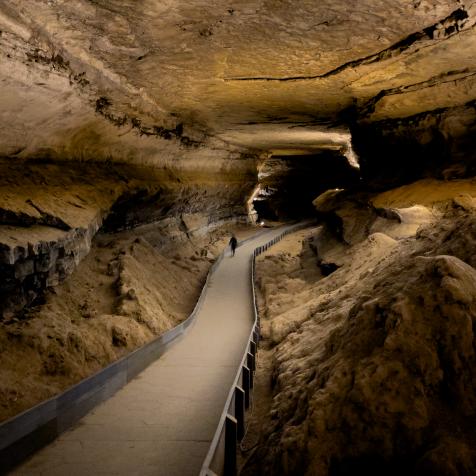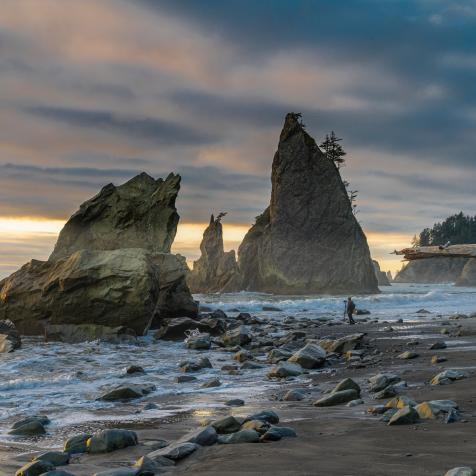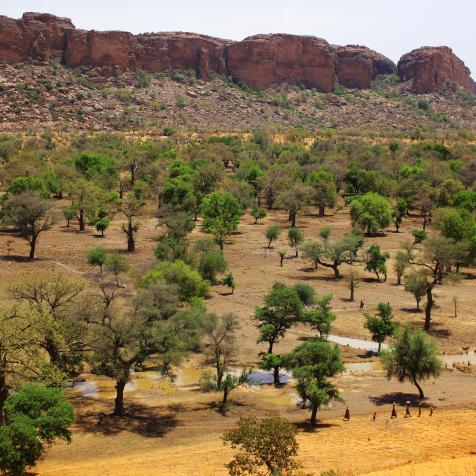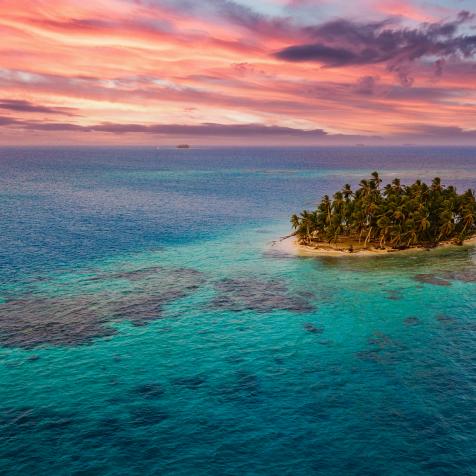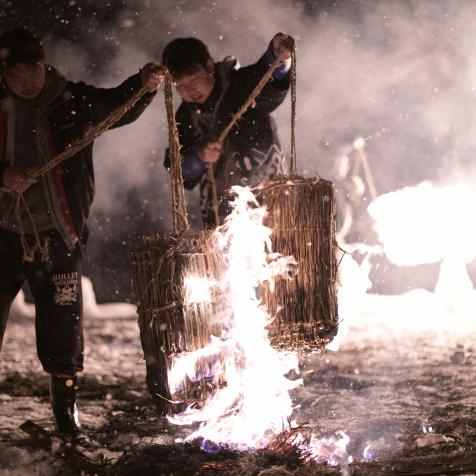
The Grand Tsingy in Madagascar Is a Deadly Forest of Limestone Needles
Not unlike the movie of the same name, Madagascar is a wild, unique place. (Great flick, by the way.) The African island nation is home to a slew of endemic species and breathtaking natural landscapes to match. All that considered, it shouldn't be too shocking to hear that the country boasts the world's largest stone forest. It has a smaller one that's bright red, too. Yes, we're sure this isn't Mars.

Shutterstock
Watch Out for That Lemur
The fourth largest island on Earth(!), Madagascar is home to plenty of double-take-worthy sights. The country developed independently, which sets the culture apart from the rest of Eastern Africa. Because the country was under French rule until 1960, there is evidence of French architecture throughout the cities. Mixed in with the old colonial vibe, the island's original wooden architectural tradition can also be found, a tradition that was added to the UNESCO list of Intangible Cultural Heritage in 2003. But let's talk nature too. First of all, lemurs. Second, tsingys. Third, lemurs on tsingys. Just keep reading.
What's This Tsingy Thingy?
In Malagasy, "tsingy" means "where one cannot walk barefoot." And that's no joke. The word refers to tall, thin, needle-like rock formations that can be found throughout the country. Not to freak you out, but just one misstep through a tsingy forest could impale somebody.
The Tsingy de Bemaraha Strict Nature Reserve, a UNESCO World Heritage site, is the largest example of a tsingy forest on Earth. How big? The reserve, which includes the veritable cathedral of limestone, stretches 375,600 acres. But the height is the really scary part; some of the rock pinnacles can reach 2,600 feet. Not only a stunning and/or terrifying sight to behold, this Tsingy in central west Madagascar is also a hub for endemism, as it's home to many unique endangered flora and fauna (including — you guessed it — lemurs).

Shutterstock
NASA notes that the formation of the Tsingy began some 200 million years ago when layers of calcite at the bottom of a lagoon formed a thick limestone bed. Later, "tectonic activity elevated the limestone, and as sea level fell during the Pleistocene ice ages, even more of the limestone was exposed. No longer underwater, the ancient sediments were carved by monsoon rains, which washed softer rocks away and left tougher rocks standing. Meanwhile, groundwater carved caves below the surface. As cave ceilings gave way, canyons formed between rocky towers."
Need something a little more Instagrammable? Tsingy Rouge is another stone forest you can find in the country. Oh, but this one is bright red. This Mars-like Madagascar landscape is the beautiful result of erosion.
This article first appeared on Curiosity.com.



































































